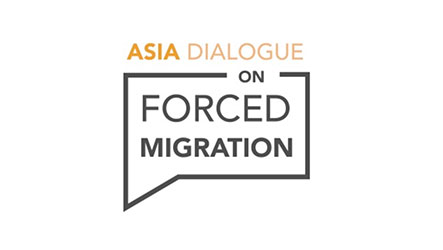Questions from the background paper which are relevant to this discussion:
- How well are the media performing their role as the fourth estate – making Government accountable?
- What accountabilities should bind the government and the media?
- Is the new media – the internet and blogs – a real answer to
questions about the oversight of Government by our established media?
I’ll try to address each of these in turn, drawing on and updating some ideas from a discussion paper by Emma Dawson and myself on Australian media policy and another one on public broadcasting.
1. How well are the media performing their role as the fourth estate – making Government accountable?
Firstly, the media’s ‘public purpose’ is broader than simply making Government accountable. In a gradually fragmenting internet age,
we also need the media to provide shared public spaces which can host discussion both within and between communities of interest.
We need media that can reflect the diversity of its audience, recognising that we are all members of multiple overlapping communities – including our national community. And we need the media to scrutinise all those who wield power – not just Government but also corporations, lobby groups, large NGOs/unions, influential international organisations, even other media – any individual or organisation which has a strong influence on the decisions that affect our lives.
I think a healthy media sector is like a healthy ecosystem: all
niches need to be occupied for the sector as a whole to fulfill its
purpose (analogy borrowed from Marcus Westbury’s writings on democracy). Each form of media has its strengths and vulnerabilities:
- Commercial ‘mass’ media outlets have the resources to produce original news and investigative journalism. They have a more direct incentive to be responsive to their audiences than public broadcasters, and they are also somewhat better insulated from political interference
in their content. On the other hand, they have no obligation to prioritise the public interest over the interests of advertisers, media owners and managers; to provide critical coverage of companies with which they have business relationships; or to reflect the diversity of their audiences in their programming (the lowest common
denominator effect). - Public broadcasters also have the resources to produce original news and investigative journalism. Unlike commercial media they have a legislated responsibility to put the interests of ‘the public’ above those of advertisers, governments, or any one particular community, and
(through SBS) to reflect the diversity of their audience. Public broadcasters are in a very strong position to harness the opportunities presented by narrowcasting while also addressing concerns that too much individual tailoring of content will turn us into a ‘nation of tribes’. On the other hand they can arguably be more vulnerable to political interference by the government of the day, and may have a less direct incentive to respond to audience preference (although given the positive results of audience
surveys that doesn’t seem to be hurting the ABC too much at the moment) - Community & ‘independent’ media are growing in reach, quality and importance, but they often struggle to produce in-depth, accessible, accurate content based on original research and primary sources; and to reach audiences
beyond their own geographical community or community of interest.
As long as each sector is able to play to it’s strengths, and have it’s weaknesses compensated for by other sectors, we have a healthy fourth estate. But long-term incremental changes in media policy and the structure of the media business have been making this balance increasingly difficult to attain.
Funding for public broadcasting has decreased in real terms over the last ten years, and SBS has become reliant on advertising, removing one the key benefits of public ownership (see this McKinsey report for evidence of the benefits of an ad-free public broadcaster). Ownership of commercial media outlets has become more concentrated, and flagship newspaper chains like Knight-Ridder in the US have been sold at firesale prices. While most media companies are relatively profitable, declining circulations and the loss of advertising market share to online media has spooked investors and sparked a wave of cost-cutting which has hit hardest at the heart of the fourth estate – spending on original current affairs and investigative journalism. There are now just two investigative journalists left at Fairfax. From anecdotal evidence I suspect that, without interns and low-paid cadet journos, most major newsrooms in the country – both public and commercial – would be very hard-pressed.
None of this is to deny the enormously positive impact and opportunities afforded by new media (particularly citizen media). A recent Pew Research Centre survey found that while most American journalists thought that the internet had a positive effect on journalism, it had a negative effect on journalism’s business model. So the question is not whether good journalism can still be practiced through or alongside new media – rather the question is how quickly can a transformed ‘mass’ media find a business model that supports its public purpose – and what affect will the ‘lag time’ have on democracy? (More on this under ‘who will pay our pipers?’)
2. What accountabilities should bind the government and the media?
One of the reasons given for this Summit is the fact that the short-termism of the political cycle can often distract us from the need to solve long-term problems. We need to recognise that the media both feeds the short-termism of the political cycle and is fed by it. It takes in-depth public-interest journalism with a sense of history to break this cycle. There is also a case for journalists to be responsible in picking their battles – the slightest whiff of corruption or mendacity justifies harsh treatment, and it’s probably better for journalists to err on the side of too little sympathy for politicians than too much, but the aggressive ‘why wasn’t this solved yesterday?’ reporting style doesn’t help much when it comes to long-term complex policy problems. Health reporting is a great example of this – the endless cycle of scandals about waiting lists followed by (usually successful) calls for more hospital funding don’t contribute much to solving the real long-term problems in our health system. ‘Why aren’t you spending as much on preventative health compared to the rest of the OECD?’ doesn’t really pack the same punch as ‘why did this woman wait 14 hours in emergency?’ The truth is complex. The job of a journalist is to convey as much of that complexity as possible without sending people to sleep. Australian political reporting features far too much focus on ‘the horse race’ and far too little on the real impact of policy on people’s lives – what Margaret Simons calls politics ‘as if it matters’. Andrew Leigh has a good post about this problem on his blog today:
‘I’m generally an admirer of the Australian media. On a typical day, I’d take 1-2 media calls, and in my own experience, Australian journalists are a bunch of bright, careful, and diligent people. But for reasons I can’t quite fathom, much of the coverage of the 2020 summit has been abysmal. Day after day has seen stories on whether the invitation list is biased, whether the powerpoint backgrounders are sufficiently comprehensive, and when the submissions are going to be released. With a few exceptions, I’ve seen barely any discussion of actual policy issues. Of course the 2020 summit has flaws, but to only focus on the personalities and organisational stuff seems to me a terrible missed opportunity.’
We need to recognise that the media sector is now a powerful political force in its own right. More than this – we need to update the separation of powers doctrine for the 21st century, to recognise that power does not only reside in the church, and in the executive,
legislature and judiciary, but also in the media, corporations, and
civil society (again thanks to Marcus for the ‘new separation of powers‘ idea).
What does this mean in practical terms? Many of the ideas for democratic renewal that have been put forward by 2020 summiteers so far can also be applied to the media – putting some sand in the gears of the revolving door, avoiding obvious conflicts of interest, increasing transparency and disclosure, strengthening the firewalls between editorial and advertising departments, etc.
Some possible ideas:
- Either through the MEAA code of conduct or at the individual outlet/program level, adopt voluntary restrictions on revolving door appointments between media outlets, PR firms and departments and politician’s offices – for example all journalists could agree to a 1-year waiting period before taking up a PR job on their beat or a media adviser role for a politician.
- I realise this is a little ‘out there’, but in my dream world, publicly listed media companies would place their investments in non-media companies under the same restrictions that apply to Ministers – i.e. blind trusts only. This is not an indictment of the probity of media company directors or managers, but a recognition that independence is the most essential safeguard of good journalism, and independence cannot be guaranteed where a financial conflict of interest exists.
I’m talking about voluntary action here – aside from the ‘public interest requirement’ that the UK places on the holders of broadcast licenses, there’s not a lot that governments can or should do to attempt to affect journalistic culture directly. Indirect measures are another matter (see below).
3. Is the new media – the internet and blogs – a real answer to questions
about the oversight of Government by our established media?
It’s one answer, but definitely not the answer. New media, blogs and citizen journalism projects have addressed some of the weaknesses of the traditional media (lack of new voices, local perspectives, and the ability to contest the story). They also play an important role in holding the mass media to account. But in most cases they are yet to replicate the traditional media’s strengths – i.e. original, professional, investigative reporting based on primary sources. While the low overheads of online publishing have lowered the barriers to entry for new players, the most visited online news sources are still the websites of the major offline outlets. Innovative online journalism projects which take advantage of open editing software (e.g. sourcewatch.org) have great potential to reduce the cost of producing investigative journalism to a professional standard. But the money for all the real-world number-crunching, interviewing and fact-checking still has to come from somewhere.
Kate Crawford has written about one possible idea for addressing this problem over on the main governance page:
“establish a National Investigative Journalism Fund, co-sponsored by government and the media industry. Journalists could apply in
competitive rounds, and an independent board would assess applications and award ‘investigative grants’ for stories in the public interest. This would further support the kind of high quality Australian journalism that also contributes to our overall democratic health”
I think this is an excellent idea. The fund could have a category for freelancers as well as salaried journos at commercial/public/independent media outlets.
And a fourth question – who will pay our pipers?
This is the hard one. We can come up with all the good ideas we like for improving the fourth-estate role of the media, but most of these ideas cost money. In light of the structural changes noted above, here are some possible futures:
Commercial
* More ‘sponsored’ journalism – ‘this program brought to you by Toyota’ etc. This is already happening, and likely to become more prevalent. Main problems are a) it throws the seperation of powers out the window (and with the ease of tracking click-throughs instantly online, stories may be shelved not just because they we’ren’t widely read but because they didn’t bring in enough revenue), and b) it’s likely to be hard to find brand-name sponsors for the really important stories. ‘This child sex abuse story brought to you by Clairol’? Unlikely.
* More subscription-based journalism (online, print, cable) with limited, targeted advertising – we’re already seeing a resurgence of subscription-supported journalism in Australia with sites like Crikey. This could be an important part of the story, although higher subscription costs tend to be a barrier to low-income audiences.
* Large, multinational publicly listed media companies could a) de-list and become private businesses run by entrepreneurs who have a commitment to journalism’s public purpose and are willing to accept lower profit margins to see that it is served (unlikely) OR b) their news journalism arms could be spun-off as non-profit enterprises, subsidised as a CSR/brand building exercise by their parent companies (also pretty unlikely)
Philanthropic
* There are some great models here, from the more traditional (e.g. the role the Morrie Schwartz played for the Monthly and that Duncan Turpie has played for New Matilda), to the new (e.g. the Greg Palast Investigative Fund). Community broadcasters have always supplemented their public funding with sponsors/subscribers (btw, for those who are interested there’s an excellent idea from one of the youth summit participants on bringing support for community media up to date over here). Sites like opendemocracy.org and sourcewatch.org are funded by a mix of grants from foundations and small donations from individuals. Australia still doesn’t have a strong philanthropic tradition, although this is starting to change.
Public
There is already a long-running debate about ABC and SBS funding and the virtues of somehow removing that funding from the direct control of the government of the day, but perhaps in light of the above, we need to broaden that conversation beyond the public broadcasters.
* Emma Dawson and I floated the TV license-fee model in the Public Broadcasting paper as a way of removing public broadcasting funding from direct government control.
If this proves unpopular there are other options, including:
* Increasing the percentage of gross revenue currently paid as a spectrum license fee by commercial broadcasters, extending it to cover other content providers (such as ISPs and Telcos) and dedicating that revenue specifically to the ABC/SBS
* A small tax on advertising, to cut in above a fairly high ceiling, again to go directly into a fund for the ABC/SBS, Community Media Foundation, or the Investigative Journalism Fund. The tax could either be imposed on expenditure (like FBT) or on sales. A tax on expenditure may? be easier to collect, and, if there was a fairly high annual total before it cut in, it could even have a beneficial effect on small businesses, increasing the relative power of their advertising dollars while they are still growing. It’s a little out of left field, but I think this idea is worth considering.
Regardless of which mix of funding we end up with, there’s a strong argument for setting up some kind of Australian Media Trust as the channel through which funding for public-purpose media flows – to the ABC, SMS, community media, and potentially the Investigative Journalism Fund. The trust, which could be run along similar lines to the National Heritage Trust, would receive and distribute current recurring funding, but could also receive private donations, and could be the steward of one-off windfalls from the sale of new spectrum. It could also be tasked with regularly measuring and making recommendations on the health of Australia’s media sector.



